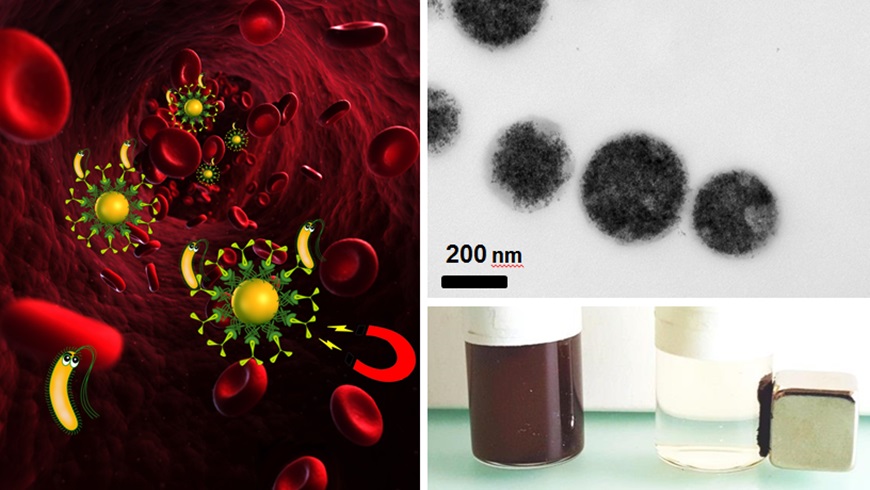New treatment methods for blood poisoning
"Pulling" bacteria out of blood

An antibody for everything
Empa researcher Inge Herrmann and her team are developing a solution in collaboration with modelling expert Marco Lattuada from the Adolphe Merkle Institute and doctors from the Harvard Medical School. The idea for the treatment is the magnetic purification of blood. The principle is, at least in theory, quite straightforward. Iron particles are coated with an antibody that detects and binds the harmful bacteria in the blood. As soon as the iron particles are attached to the bacteria, they are removed from the blood magnetically.
However, there is (still) a small catch: So far, it has only been possible to coat the iron particles with antibodies that recognise one type of bacteria – but many different types of bacteria may be involved, depending on the species causing the blood poisoning. Using blood analysis, doctors must therefore first determine which bacteria is causing the poisoning before the appropriate antibodies can be used. "This blood analysis is time-consuming and time plays a vital role in the treatment of blood poisoning," explains Herrmann. This is also the reason for magnetic dialysis rarely having been used to date.
But a team at the Harvard Medical School led by Gerald Pier has now developed an antibody that can bind almost all the bacteria that can trigger blood poisoning - so if there is a suspicion of sepsis, the magnetic treatment could be started immediately, regardless of which pathogen is in the blood. This "allrounder" antibody to succeed in isolating pathogenic bacteria - similar to using dialysis.
How harmful are the iron particles?
Further experiments still to come
In the future, it should therefore no longer be strictly necessary to administer antibiotics as soon as there is a suspicion of sepsis. Blood will be taken from the patient for analysis, and the patient connected to a dialysis machine to cleanse the blood, no matter what bacteria are in it. As soon as the doctors have the detailed blood values, an antibiotic therapy tailored to the pathogen can be introduced, if necessary.
This idea is currently just a future ambition, as there are still numerous issues that need to be clarified. Firstly, it is imperative that this method is used in the initial stage of sepsis, when the damage has not yet spread from the blood to the organs or bodily functions, and there is also the issue of how well this treatment will work in unstable patients or patients with pre-existing conditions. But Herrmann and her team are optimistic - and also a step closer to achieving a new and more gentle treatment for sepsis.
M Lattuada, Q Ren, F Zuber, M Galli, N Bohmer, MT Matter, A Wichser, S Bertazzo, GB Pier, IK Herrmann, "Theranostic body fluid cleansing: rationally designed magnetic particles enable capturing and detection of bacterial pathogens", J Mat Chem B, doi:10.1039/c6tb01272h
-
Share
